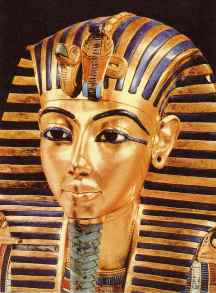"The question of the genetic origins of ancient Egyptians, particularly those during the Dynastic period, is relevant to the current study. Modern interpretations of Egyptian state formation propose an indigenous origin of the Dynastic civilization (Hassan, 1988). Early Egyptologists considered Upper and Lower Egyptians to be genetically distinct populations, and viewed the Dynastic period as characterized by a conquest of Upper Egypt by the Lower Egyptians. More recent interpretations contend that Egyptians from the south actually expanded into the northern regions during the Dynastic state unification (Hassan, 1988; Savage, 2001), and that the Predynastic populations of Upper and Lower Egypt are morphologically distinct from one another, but not sufficiently distinct to consider either non-indigenous (Zakrzewski, 2007). The Predynastic populations studied here, from Naqada and Badari, are both Upper Egyptian samples, while the Dynastic Egyptian sample (Tarkhan) is from Lower Egypt. The Dynastic Nubian sample is from Upper Nubia (Kerma). Previous analyses of cranial variation found the Badari and Early Predynastic Egyptians to be more similar to other African groups than to Mediterranean or European populations (Keita, 1990; Zakrzewski, 2002). In addition, the Badarians have been described as near the centroid of cranial and dental variation among Predynastic and Dynastic populations studied (Irish, 2006; Zakrzewski, 2007). This suggests that, at least through the Early Dynastic period, the inhabitants of the Nile valley were a continuous population of local origin, and no major migration or replacement events occurred during this time.
Studies of cranial morphology also support the use of a Nubian (Kerma) population for a comparison of the Dynastic period, as this group is likely to be more closely genetically related to the early Nile valley inhabitants than would be the Late Dynastic Egyptians, who likely experienced significant mixing with other Mediterranean populations (Zakrzewski, 2002). A craniometric study found the Naqada and Kerma populations to be morphologically similar (Keita, 1990). Given these and other prior studies suggesting continuity (Berry et al., 1967; Berry and Berry, 1972), and the lack of archaeological evidence of major migration or population replacement during the Neolithic transition in the Nile valley, we may cautiously interpret the dental health changes over time as primarily due to ecological, subsistence, and demographic changes experienced throughout the Nile valley region."
-- AP Starling, JT Stock. (2007). Dental Indicators of Health and Stress in Early Egyptian and Nubian Agriculturalists: A Difficult Transition and Gradual Recovery. AMERICAN JOURNAL OF PHYSICAL ANTHROPOLOGY 134:520–528
 IDK I think if you ask that question it would be better to ask yourself why are you even participating in a thread entitled "Were Egyptians Black or White".
IDK I think if you ask that question it would be better to ask yourself why are you even participating in a thread entitled "Were Egyptians Black or White".


 .....te hee
.....te hee





